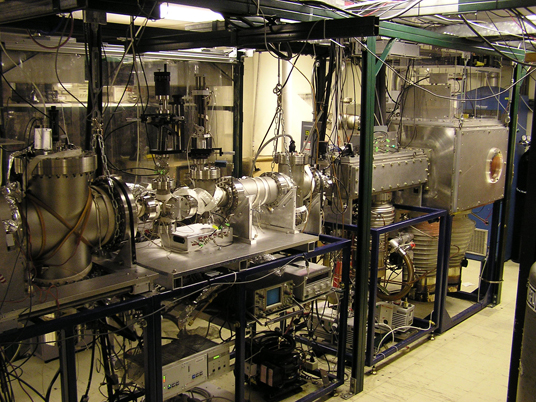Continetti Group
Dissociative Charge Exchange
Extra information on the following experiments:
Machine C is a versatile photofragment spectrometer in it's own right, capable of studying many-body dissociation processes in a kinematically complete measurement employing the quad crossed-delay line (QXDL) detector. Measurements of dissociative charge exchange (DCE) were carried out on the apparatus between 2003-2008, with exciting results obtained on a number of exotic species, including the DCE, with cesium, of the two-body dissociation of the isotopologs of H3O+, NH4+, CH5+ and the two- and three-body dissociation of both H3+ and the sym-triazine cation (C3H3N3)+ using multiparticle coincidence detection techniques.
In these studies, Machine C was configured as a multi-particle translational spectrometer. It consists of four differentially pumped regions, the source, acceleration, time-of-flight, and detection region. Ions are generated in the source by electron impact or electric discharge on a pulsed supersonic expansion. The cations are then accelerated 16 keV and re-referenced to ground using a high-voltage switch. The cations are electrostatically guided through the time-of-flight region into the detector region. The cation beam is passed through a mass gate, to assure that only the ion of interest enters the Cs cell. The cations are neutralized by the Cs and the dissociating neutral fragments are detected using a crossed delay-line, time- and position-sensitive detector, capable of detecting up to eight particles in coincidence. The un-neutralized cations were monitored by deflection into a microchannel-plate-based detector.
The source region is on the far right of the photograph. The acceleration region is inside the source chamber. The time-of-flight region is next followed by the detector region.
More photos of Machine C can be found in the photo gallery.
